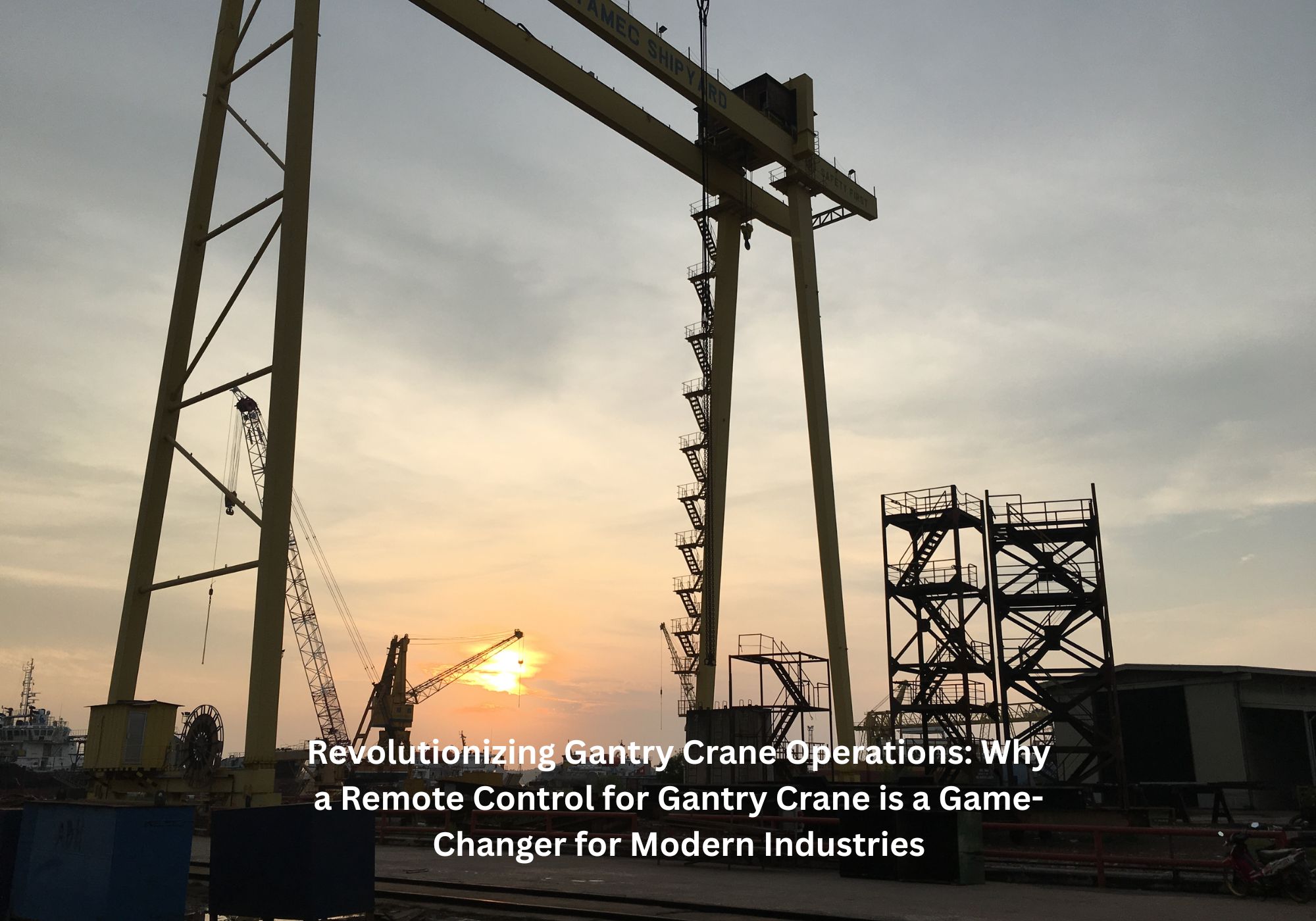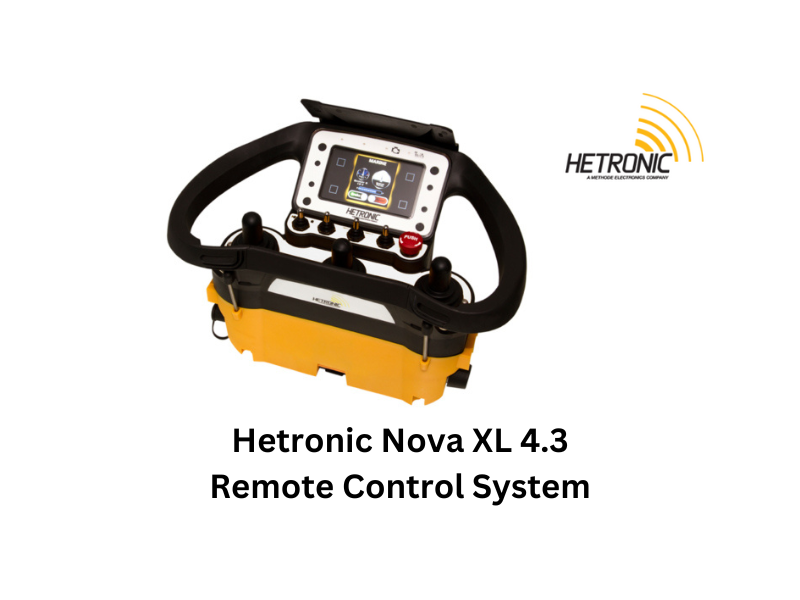Introduction – Remote Control for Gantry Crane
In the ever-evolving world of industrial automation, efficiency, safety, and precision are the cornerstones of successful operations. Gantry cranes, known for their ability to lift and move heavy loads with ease, have long been a vital asset across industries such as manufacturing, shipping, construction, and logistics. However, as technology advances, the traditional methods of operating these massive machines are being replaced by smarter, safer, and more efficient solutions. One such innovation is the remote control for gantry crane—a game-changer that is transforming how industries manage their material handling needs.
In this blog post, we’ll explore the benefits, applications, and key considerations of using a remote control for gantry crane, and why it’s becoming the gold standard for modern industrial operations.
Understanding Gantry Cranes and Their Role
Before diving into the advantages of remote control systems, it’s essential to understand what gantry cranes are and why they’re indispensable in various industries.
What is a Gantry Crane?
A gantry crane is a type of overhead crane with a single or double girder configuration supported by freestanding legs that move on wheels or along a track. Unlike bridge cranes, gantry cranes do not need to be permanently installed, making them highly versatile for indoor and outdoor applications. They are commonly used for lifting heavy objects in shipyards, warehouses, factories, and construction sites.
Traditional Operation Methods
Historically, gantry cranes have been operated manually or via wired pendant controls. While effective, these methods come with several limitations, including restricted mobility, safety risks, and reduced operational efficiency.
The Shift to Remote Control for Gantry Crane

What is a Remote Control for Gantry Crane?
A remote control for gantry crane is a wireless device that allows operators to control the crane’s movements from a safe distance. Utilizing radio frequency (RF) technology, these remote controls can manage all crane functions—lifting, lowering, traversing, and hoisting—without the need for physical connections or proximity to the load.
How Does It Work?
The remote control system consists of a transmitter (the handheld device used by the operator) and a receiver (installed on the crane). When the operator presses a button or moves a joystick on the transmitter, it sends a coded RF signal to the receiver, which then executes the command. Modern remote controls are equipped with safety features such as emergency stop buttons, two-way communication, and customizable controls to suit specific operational needs.
Key Benefits of Using Remote Control for Gantry Crane

Enhanced Safety
Safety is paramount in any industrial setting. Traditional crane operation often requires operators to be in close proximity to heavy loads, increasing the risk of accidents and injuries. With a remote control for gantry crane, operators can maintain a safe distance from the load and hazardous areas, significantly reducing the risk of workplace accidents. Emergency stop features and fail-safe mechanisms further enhance safety.
Increased Efficiency and Productivity
Remote controls eliminate the need for operators to be tethered to a fixed control station or follow the crane on foot. This mobility allows for faster and more precise positioning of loads, minimizing downtime and increasing throughput. Operators can quickly respond to changing operational demands, resulting in smoother workflows and higher productivity.
Improved Ergonomics and Operator Comfort
Operating a gantry crane manually or with a wired pendant can be physically demanding and fatiguing. Remote controls are designed to be lightweight, ergonomic, and easy to use, reducing operator fatigue and the risk of repetitive strain injuries. This leads to improved job satisfaction and overall well-being for crane operators.
Greater Flexibility
Remote control systems offer unparalleled flexibility in crane operation. Operators can control the crane from virtually any vantage point, ensuring optimal visibility and control over the load. This is especially beneficial in complex or crowded environments where line-of-sight and maneuverability are critical.
Cost Savings
While the initial investment in a remote control system may be higher than traditional controls, the long-term cost savings are significant. Reduced downtime, fewer workplace accidents, lower maintenance costs, and increased productivity all contribute to a rapid return on investment.
Applications of Remote Control for Gantry Crane
The versatility of remote control systems makes them ideal for a wide range of industries and applications:
- Manufacturing: Streamlining assembly lines and material handling processes.
- Shipping and Logistics: Efficiently loading and unloading cargo in ports and warehouses.
- Construction: Safely lifting and positioning heavy building materials.
- Steel and Metal Industries: Handling large metal sheets, coils, and components.
- Rail Yards: Managing containers and heavy equipment with precision.
Key Features to Look for in a Remote Control System
When selecting a remote control for gantry crane, it’s important to consider the following features to ensure optimal performance and safety:
Robust and Durable Design
Industrial environments can be harsh, with exposure to dust, moisture, and extreme temperatures. Choose a remote control system that is rugged, weatherproof, and built to withstand tough conditions.
Reliable Communication
Look for systems that use advanced RF technology with secure, interference-resistant communication. Features like frequency hopping and encrypted signals prevent unauthorized access and signal loss.
Customizable Controls
Every operation is unique. Opt for remote controls that offer customizable buttons, joysticks, and control layouts to match your specific application requirements.
Safety Features
Essential safety features include emergency stop buttons, automatic shut-off, two-way communication, and feedback indicators. These ensure quick response in case of emergencies and provide real-time status updates.
Battery Life and Charging Options
Long battery life and fast charging capabilities are crucial for uninterrupted operations. Some systems offer swappable batteries or charging docks for added convenience.
Implementing Remote Control for Gantry Crane: Best Practices
Conduct a Site Assessment
Evaluate your facility’s layout, operational needs, and potential hazards to determine the best remote control solution for your gantry crane.
Train Operators
Comprehensive training is essential to ensure operators are proficient in using the remote control system safely and effectively. Regular refresher courses and safety drills are recommended.
Regular Maintenance
Perform routine inspections and maintenance on both the crane and the remote control system to ensure optimal performance and longevity.
Compliance with Standards
Ensure that your remote control system complies with relevant industry standards and regulations, such as ISO, CE, and OSHA guidelines.
The Future of Gantry Crane Operations
As industries continue to embrace automation and digital transformation, the adoption of remote control systems for gantry cranes is set to accelerate. Emerging technologies such as IoT integration, real-time data analytics, and remote diagnostics are further enhancing the capabilities of these systems, paving the way for smarter, safer, and more efficient material handling solutions.
At Hetronic India, we are committed to delivering state-of-the-art remote control solutions that empower industries to operate with confidence and precision. Our range of remote control systems for gantry cranes is designed to meet the highest standards of safety, reliability, and performance.
Conclusion – Remote Control for Gantry Crane
The remote control for gantry crane is more than just a technological upgrade—it’s a strategic investment in safety, efficiency, and operational excellence. By enabling operators to control cranes from a distance, these systems minimize risks, boost productivity, and provide unmatched flexibility in material handling operations.
Whether you’re looking to modernize your existing gantry crane setup or are planning a new installation, embracing remote control technology is the key to staying ahead in today’s competitive industrial landscape.
Ready to revolutionize your gantry crane operations? Contact Hetronic India today to learn more about our advanced remote control solutions and how we can help you achieve your operational goals.





